Affiliate links on Android Authority may earn us a commission. Learn more.
I played Resident Evil Village on the iPhone 15 Pro Max and it terrified me
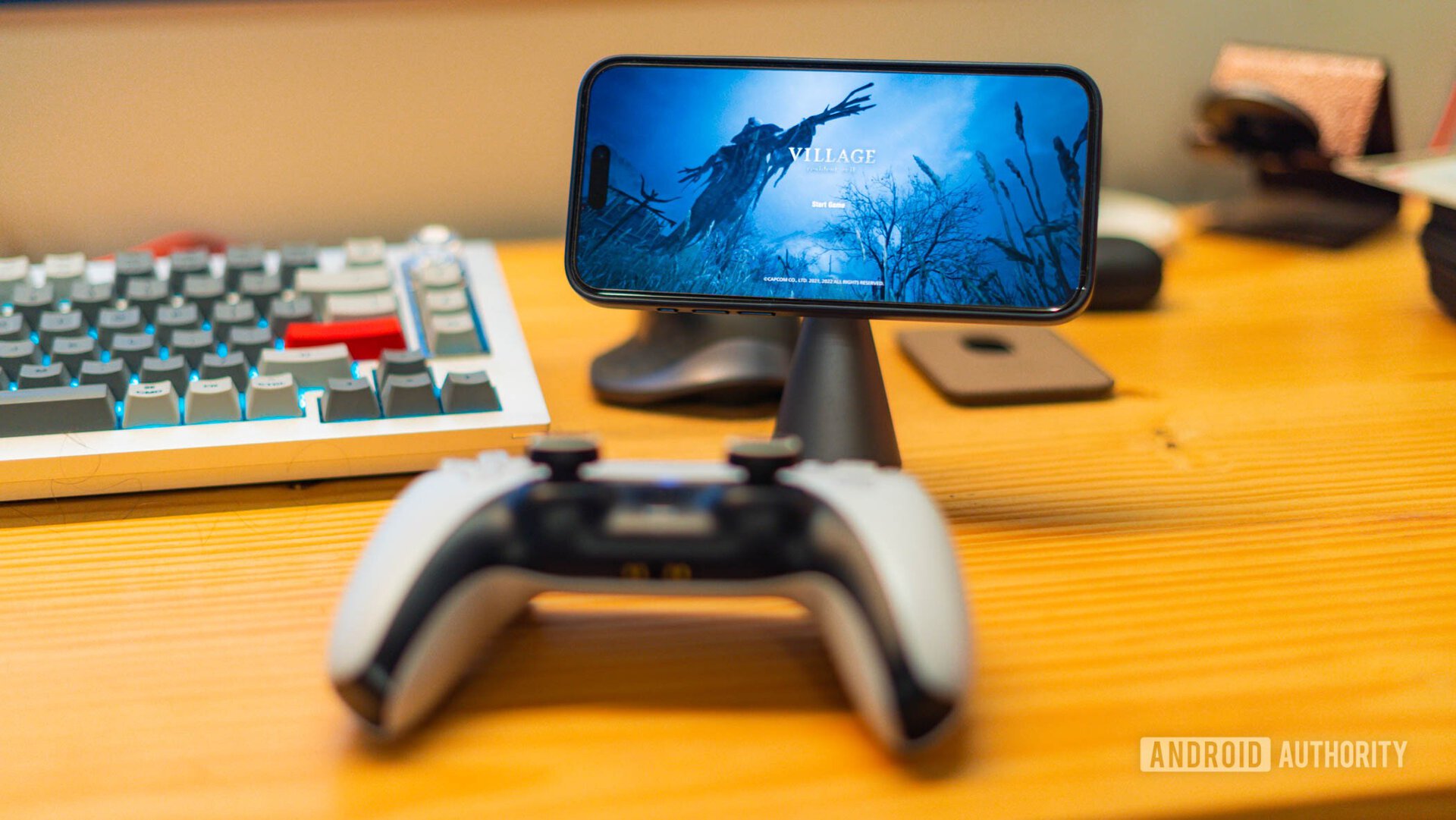
For the longest time, it seemed that the best smartphone games would waver between ad-ridden mobile titles, indie ports, or perhaps vintage classics, and a cloud-streaming future. But, Apple’s announcement that it was bringing AAA titles like Resident Evil Village and the next Assassin’s Creed to the iPhone 15 Pro and M1-powered iPads had me cautiously optimistic. The realist in me expected the games to be watered-down mobile ports in the same vein as Final Fantasy XV Pocket Edition — not a bad game, but far from a console-class title. Well, now I’ve had the chance to try one on my iPhone 15 Pro Max and… boy, was I wrong.
Resident Evil Village is now available for both the iPhone 15 Pro and for iPads powered by Apple’s M1 and M2 chipsets. Having played through the demo version of the title twice, I can confirm that Apple’s claims were legit. In fact, Resident Evil Village on the iPhone 15 Pro or Pro Max is quite literally the full-blown console and PC version of the title, and it’s glorious.
Would you pay $60 for a console game on your smartphone?
Optimized to a sheen
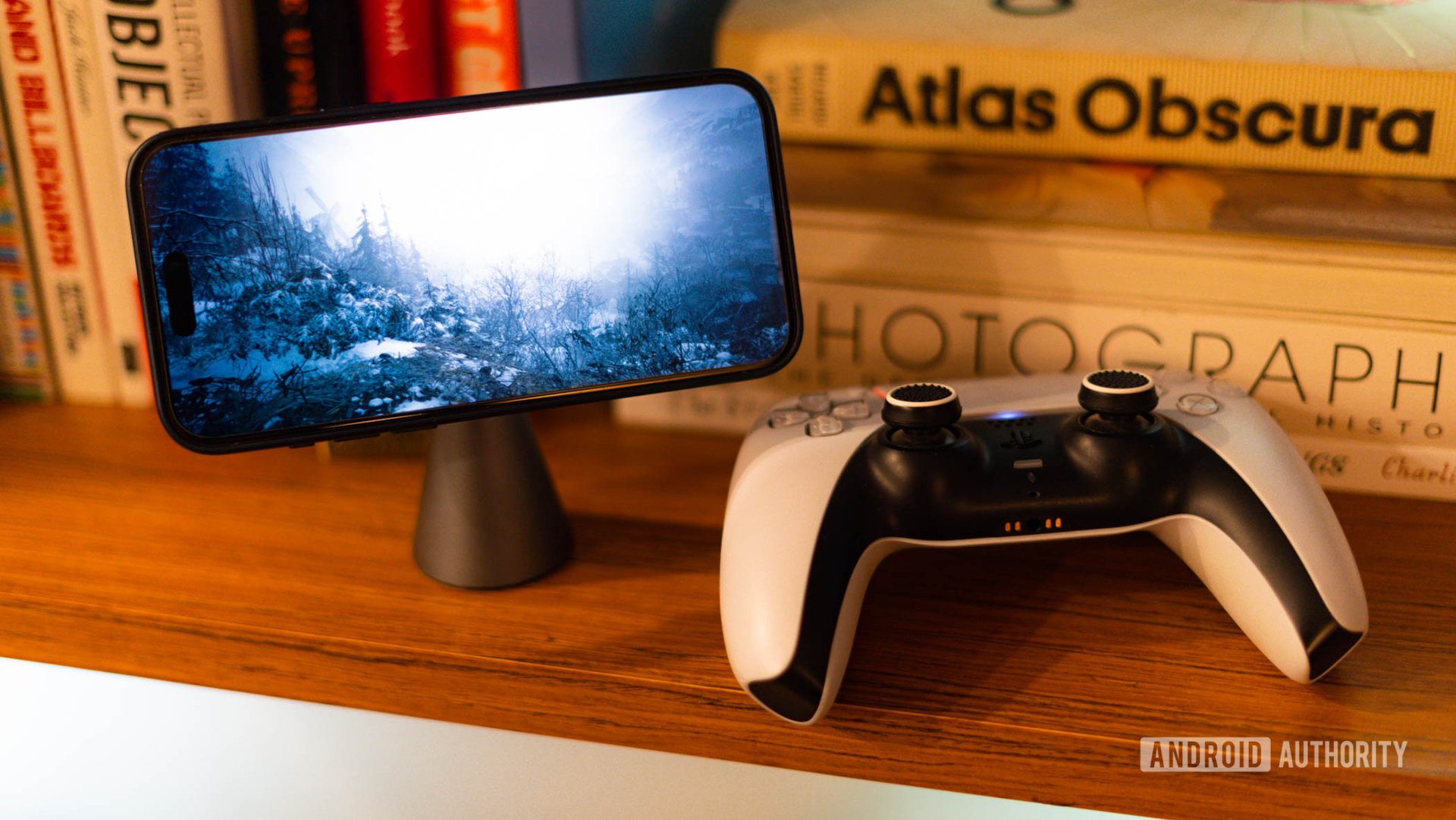
Let’s get the basics out of the way first. Capcom’s optimization of Resident Evil Village for the iPhone stands out as even more impressive than the sheer ability to run the game on your phone. It’s clear that a lot of care has gone into the title, and it’s more than a simple port. And it all starts with the file size. Compared to the PlayStation 5 copy of the game, the iPhone version of Resident Evil Village clocks in at about 13GB for the entire game and 7GB for the demo. That’s almost half the size of the PlayStation 5’s version — an essential factor considering the limited storage capacities and non-expandability of phone storage (on iPhone, at least).
It doesn’t end there. Capcom didn’t port over the title from the lowest common platform like the PlayStation 4 or Xbox One. Instead, Village borrows liberally from the PlayStation 5 version of the game. It’s the ultra-quick load times that sell the modern console experience, and Capcom has implemented the same in the iPhone version (though exclusively on the iPhone 15 Pro/Pro Max) of Resident Evil Village. Similarly, in terms of graphics, it’s clear that the iPhone version is more PlayStation 4 Pro than the OG. It’s an impressive feat considering the game made my old PlayStation 4 chug.
Resident Evil Village on the iPhone 15 Pro is a legit console title ported over to a smartphone.
Despite being a horror movie fan, I’m just not built for horror games, and my gameplay experience has been restricted to just the demo. But that’s been enough to get a taste of what the game offers. Taking on the Lycans in the village in the early hour of the game, the game holds its own with a level of detail I’ve never seen before on a native mobile game. In-game items like dressers have actual detail instead of being a brown slab indicating a piece of furniture. The HDR support makes the in-house setting in the early moments of the game look eerily realistic. Lighting behaves in natural ways, and so do shadows. With my headphones on and virtual surround sound flicked on, I felt a genuine sense of dread while walking through the snow in the dark.
The game supports variable refresh rates all the way to 120Hz, but I found locking it to 30Hz yielded a more consistent result with the graphics settings cranked up. I’ve noticed the occasional skipped frame, but it’s not been detrimental to the experience. You could be fooled into thinking that the entire experience was being streamed from the cloud, except it isn’t. It’s running right there on your phone.
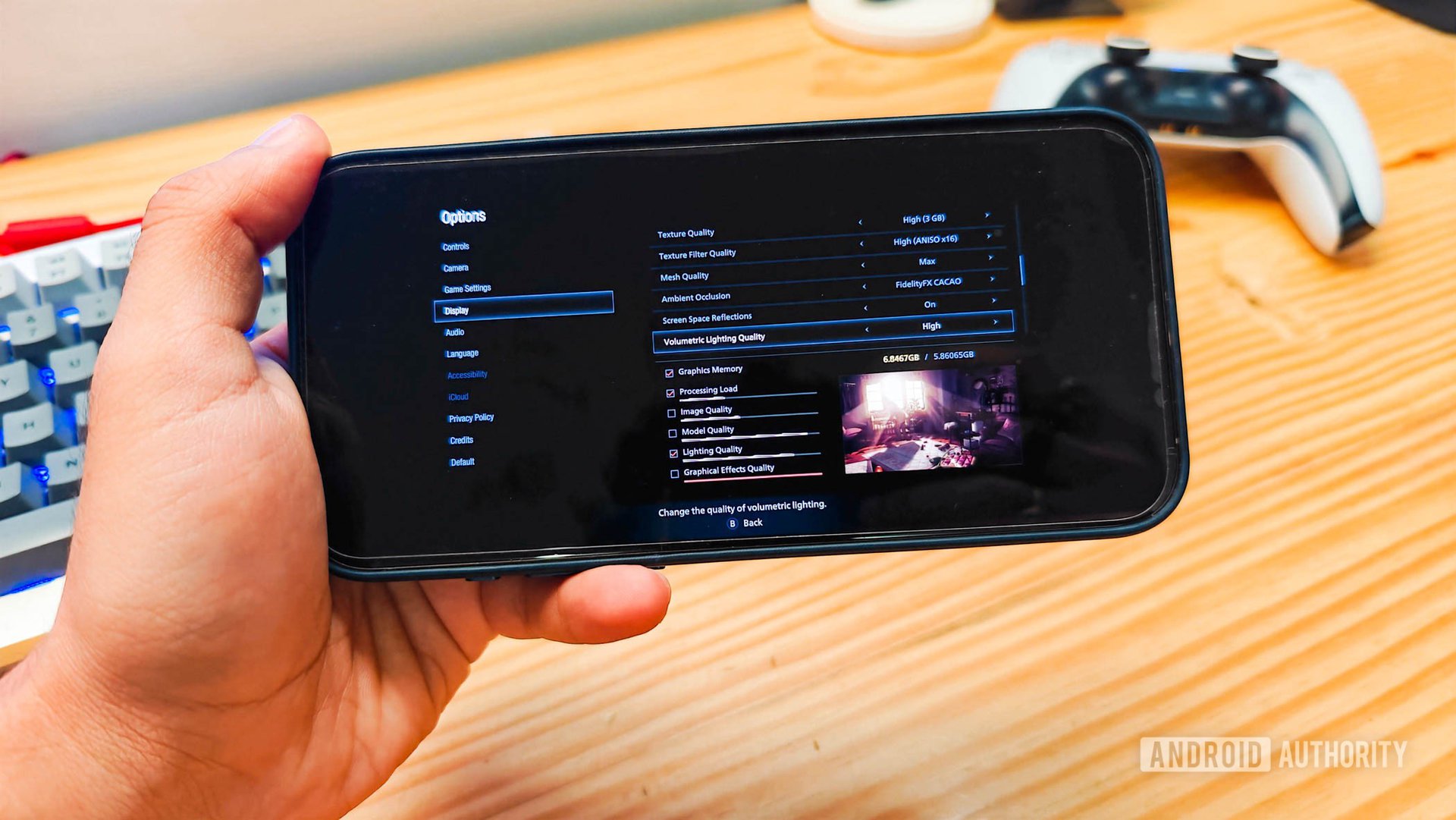
Straight out of the box, Capcom has made the right decision to tweak the settings for battery life, and better heat management. However, diving into the settings, the game’s console and PC origins become very obvious. Switching up even a few of the many toggles available can make Resident Evil Village on the iPhone look even better. The game lets you customize everything from screen space reflections to the quality of volumetric and shadow lighting. You can even bump up the resolution of the game — a very important bit that we’ll return to in a minute.
Resident Evil Village pushes the iPhone 15 Pro's limited 8GB of RAM to the limit.
A live counter at the bottom shows exactly how much of an effect the toggle will have on in-game graphics. Meanwhile, a real-time RAM counter displays the amount of RAM a particular setting will take up. Toggle everything on, and you come dangerously low to exhausting the iPhone 15 Pro Max’s 8GB of RAM. Unless I’m mistaken, Resident Evil Village on the iPhone might be the first title that offers this level of graphics customization. That said, if there was ever a reason for Apple to match up the Android competition’s generous doling out of RAM, it’s this.
Bringing the big-screen experience to a phone’s display has its challenges
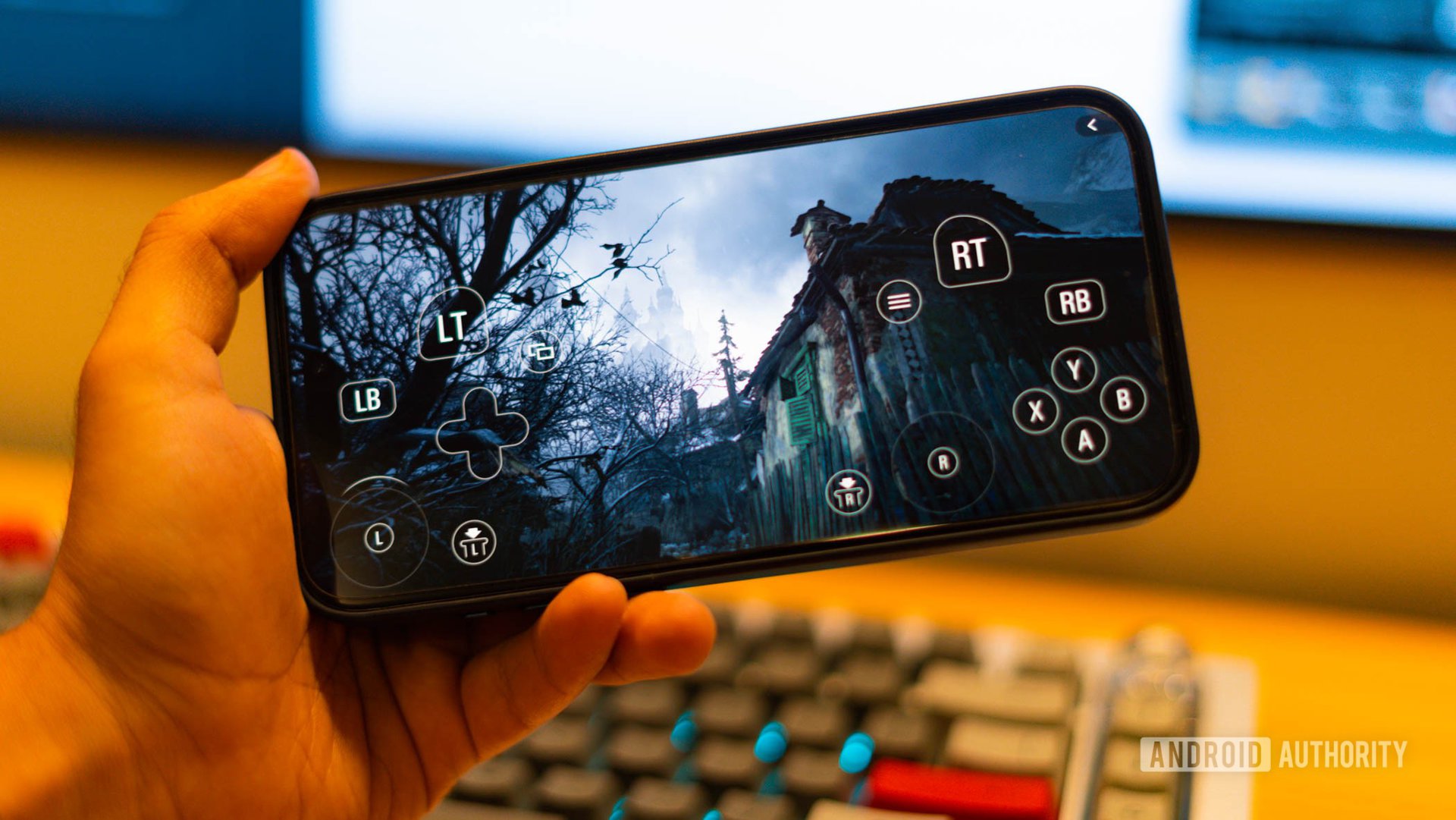
Despite being a technical marvel, Resident Evil Village has one huge issue. A title like this was never designed to be played with touchscreen controls. The on-screen controls work in a jiffy and are plenty responsive, but I wouldn’t want to play through the entire title while blocking the visual spectacle with my thumbs.
The best way to play the game is very clearly with a gamepad paired with the iPhone. The game practically begs you to do so with several in-game buttons featuring a controller layout. I paired up my PlayStation 5’s DualSense controller with the iPhone, and the game automatically mapped all the controls. Playing the game with a controller elevates the experience dramatically, and you get a real sense of immersion despite the iPhone 15 Pro Max’s relatively small display.
Resident Evil on the iPhone is a console-class experience when connected to a large-screen TV and controller.
But here’s where it gets even better. It looks absolutely stunning when connected to a monitor or television over USB-C. In fact, with options for display boundary adjustment and optimizing the audio for TV output, it’s evident that playing the game on a larger screen was a thoughtfully considered gameplay scenario instead of being a byproduct of the iPhone’s new-found video-out capabilities. I went about my second play-through of the demo with the iPhone connected to my 43-inch monitor and a Dual Sense controller. Barring the rare niggle like notifications or calls blocking the screen and a singular force close, the result was convincing enough that if you told me that I’d been playing the game on a PlayStation 4, I would’ve absolutely believed you.
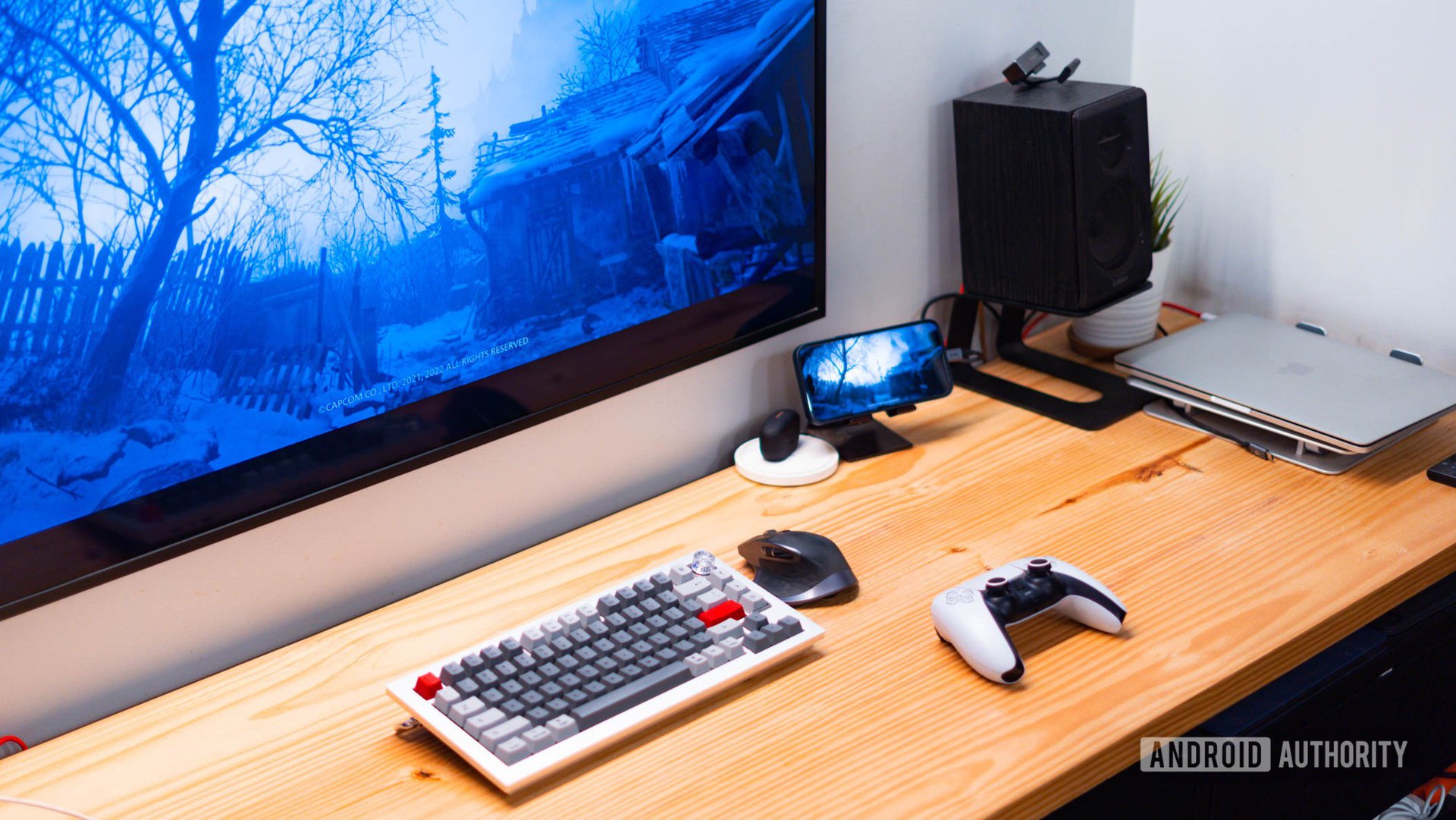
Make no mistake, running a title like Resident Evil Village clearly comes with challenges. Despite the iPhone 15 Pro being a brand-new phone, the game is already pushing the limits of the phone’s memory. Additionally, the iPhone burns through battery life with the graphics turned up, and, on average, I lost about 10% charge over a fifteen-minute session. There’s also the question of heat. Yes, the phone gets noticeably hot to the touch, and I could feel the heat radiating through my iPhone’s case within a few minutes of gameplay. The phone fared slightly better when I turned down the screen brightness and played over USB-C. I imagine the phone would automatically throttle when it gets too hot, but I absolutely wouldn’t want to risk a fire hazard by playing the game outdoors on a hot summer day.
Resident Evil Village on iPhone 15 Pro: A strong start
Despite the valid concerns around battery life and heat, Resident Evil Village is much more than a tech demo. It’s proof that the hardware is almost there to bring full-fledged AAA experiences to your pocket, more so then we’ve ever seen on Android. If the upcoming trifecta of Death Stranding, Assassin’s Creed Mirage, and The Division Resurgence have a similar level of polish, Apple’s mobile hardware would finally inch towards establishing itself as a valid choice for gamers on the go looking for full-fat AAA titles.
It won’t replace a Steam Deck, and it certainly won’t be able to compete with Nintendo’s incredible in-house IP for the Switch, but it doesn’t necessarily have to. The iPhone could easily be an option for the occasional gamer wanting a high-end experience but doesn’t want to invest in dedicated gaming hardware.
However, a handful of games don’t make a platform, and I’m curious about Apple’s plans for courting developers beyond Capcom, Ubisoft, and Kojima Productions. Until then, I’m looking forward to my date with Lady Dimitrescu. Playing the game on a phone can’t possibly be as scary as playing on a large bedroom TV… can it?